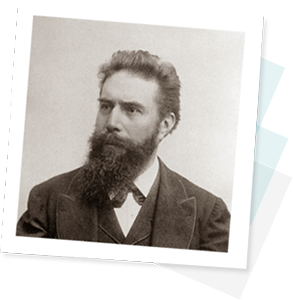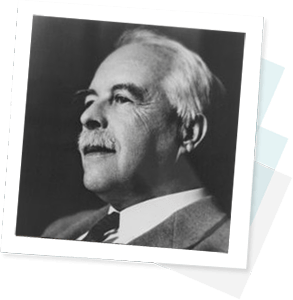Bowman XRF analyzers use X-ray fluorescence technology for material thickness and composition analysis. X-ray was discovered by German physicist Wilhelm Rontgen in 1895. He called the unknown light source that caused his film to expose “X-ray” and published his discovery with an X-ray image of his hand.
Today it’s known that X-ray is a form of electromagnetic radiation, with a frequency between ultraviolet and gamma rays. Most X-rays have a wavelength of from 0.01 to 10 nanometers, as shown in figure 1, with frequency arranged from low to high.

figure 1
Wilhelm Conrad Roentgen was awarded the first Nobel Prize in Physics in 1901.
X-ray can also be defined as a particle (Photon), and is described using an energy unit eV. Energy unit and wavelength unit are interchangeable. Therefore, X-ray is both a wave and a particle. This is an important concept in understanding X-ray properties.
X-rays can be generated by Bremsstrahlung, which is the deflection of an electron or another charged particle. Inside an X-ray tube, electrons are accelerated to the target material. Upon impact, the kinetic energy of the electrons is transferred into X-rays and heat.
It’s interesting to note that the wave properties cannot explain the photoelectric effect. Albert Einstein and Max Planck proposed that light did not behave like a wave, but rather like discrete “packets” with a specific energy content. Years later, American chemist Gilbert Lewis named the light packets photons. But people remained skeptical about Einstein’s theory until 1923, when American physicist Arthur Compton discovered X-ray scattering. He bombarded graphite with X-rays and found that the scattering X-ray has less energy. The phenomenon was named Compton scattering, which is explained by the Einstein-Planck theory. During collision with an electron, a particle like an X-ray transfers part of its momentum to the electron, and as a result the X-ray is deflected in a different direction and emitted with less energy and a different wavelength.

Wilhelm Roentgen
1845 – 1923
XRF Technology – have
made huge contributions to
modern life. Let us show you
how Bowman’s specialty – XRF
precision coating measurement
– helps companies worldwide
meet specs, and
control costs.
While the Einstein-Planck theory explains Compton scatter, there is one problem. To possess momentum, a photon must have mass, because the definition of momentum in classical physics is mass times velocity. But a photon has no mass. The answer came from Einstein, who postulated that in the fundamental sense, energy and mass are equivalent and interchangeable. He formulated his concept into the famous relationship, E=MC2. Years later, Einstein received the Nobel physics prize for his photoelectric theory.
X-ray fluorescence is related to photoelectric interaction. When photoelectric interaction occurs, an electron is knocked from its orbit, creating a vacancy. Electrons from higher energy orbits can move to fill this vacancy. The energy difference between the two orbits is released as fluorescence X-rays, i.e. secondary X-rays. Fluorescence X-ray from each element has a signature energy, and is called characteristic X-ray.

Gilbert N. Lewis
1875 – 1946


 Made in the USA
Made in the USA